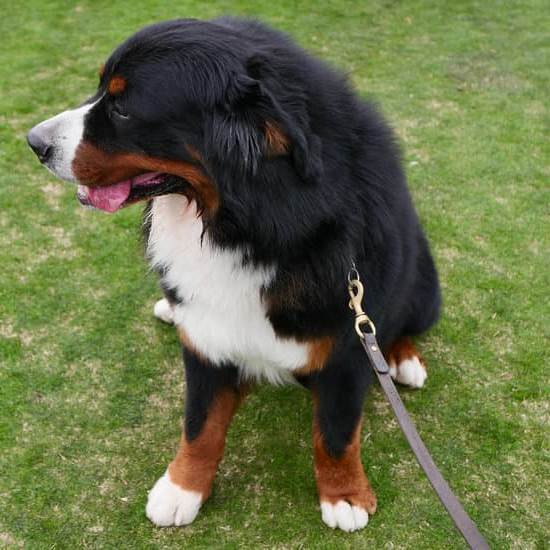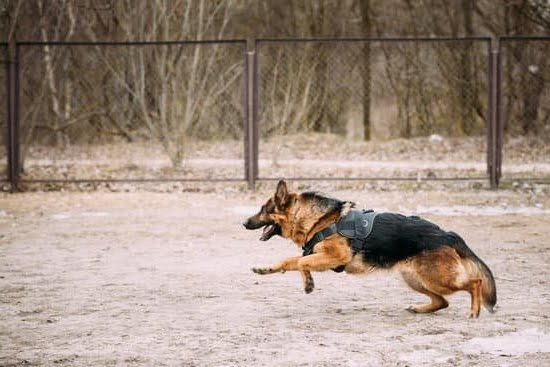Having a well-behaved dog that walks calmly on a leash is a goal for many pet owners. In this article, we will explore the essential steps to train your dog to walk on a leash effectively.
From understanding canine behavior to selecting the right leash and collar, we will cover all the necessary aspects of leash training. Whether you are dealing with a new puppy or an older dog with behavioral issues, these tips and techniques will help you establish good walking habits and build a strong bond with your furry companion.
Leash training is crucial for both the safety of your dog and your convenience as an owner. It helps prevent accidents and allows you to have better control over your pet while out for a walk.
Throughout this article, we will discuss common behavioral issues that may arise during leash walks and provide practical solutions on how to address them. Understanding the fundamentals of leash training is the first step towards creating an enjoyable walking experience for you and your dog.
Training a dog to walk on a leash requires patience, consistency, and an understanding of canine behavior. Dogs naturally have instincts that influence their behavior during walks, so it’s important to understand their body language and signals.
Furthermore, selecting the right leash and collar is essential for successful training. As we delve into each aspect of leash training, you’ll gain valuable insights on how to effectively communicate with your dog and overcome any challenges that may arise during the training process.
Understanding Canine Behavior
One of the key instincts in dogs is the urge to explore their environment and establish their territory. This can manifest as pulling on the leash or trying to wander off during walks. Understanding this instinct can help you address these behaviors effectively.
Additionally, being attuned to your dog’s body language and signals is vital during leash training. Many dogs communicate their feelings and intentions through their body language, so learning to recognize these cues can help you respond appropriately during walks. For example, if your dog displays signs of anxiety or fear while on the leash, it’s important to address these emotions and provide reassurance.
Overall, understanding canine behavior is fundamental in successfully training your dog to walk on a leash. By acknowledging their natural instincts and paying attention to their body language, you can tailor your training approach to suit your dog’s specific needs and create a positive experience for both you and your pet.
| Canine Behavior | Leash Training |
|---|---|
| Natural instincts influencing walking behavior | How understanding these instincts helps with leash training |
| Importance of recognizing a dog’s body language | Utilizing body language cues for effective training |
Selecting the Right Leash and Collar
When it comes to leash training, one of the most important factors to consider is the equipment you use. The right leash and collar can make a significant difference in your dog’s comfort and your ability to control them during walks. In this section, we will discuss the different types of leashes and collars available and provide tips on how to choose the right ones for your dog’s size and behavior.
Types of Leashes
There are several types of leashes to choose from, including standard flat leashes, retractable leashes, and slip leads. Each type has its pros and cons, and it’s essential to consider your dog’s behavior and walking habits when selecting a leash.
For example, if you have a larger or more powerful dog that tends to pull during walks, a sturdy flat leash may be the best option for better control. On the other hand, a retractable leash can provide more freedom for smaller or well-behaved dogs in open areas.
Choosing the Right Collar
Collars also come in various styles, such as buckle collars, martingale collars, harnesses, and head halters. The choice of collar depends on your dog’s breed, size, and behavior.
For instance, harnesses are often recommended for smaller breeds or dogs with respiratory issues since they distribute the pressure across the body rather than concentrating it on the neck. Martingale collars can be useful for dogs that tend to slip out of standard buckle collars due to their design that tightens slightly when pulled.
Tips for Selection
When choosing a leash and collar for your dog, it’s crucial to consider their comfort as well as functionality. Ensure that the collar or harness fits properly without being too tight or too loose. You should also take into account any specific behavior challenges your dog may have – for example, if they tend to pull on walks or are easily distracted by other animals or people.
By selecting the right leash and collar for your dog’s unique needs and behaviors, you’ll set yourself up for a successful leash training experience as you work with your furry friend on how to train a dog walk on leash effectively.
Positive Reinforcement Training Techniques
When learning how to train a dog to walk on a leash, positive reinforcement techniques can be highly effective. Dogs respond well to rewards and praise, and using positive reinforcement can help encourage desired behavior during leash training. Here are some tips on how to utilize positive reinforcement techniques for successful leash training:
- Use treats: When your dog displays good leash-walking behavior, such as walking calmly by your side or not pulling on the leash, reward them with small treats. This will help reinforce the behavior and make the experience more enjoyable for your dog.
- Offer verbal praise: In addition to treats, be sure to provide verbal praise when your dog is walking nicely on the leash. Use an upbeat and encouraging tone to communicate to your dog that they are doing a great job.
- Consistency is key: Be consistent in rewarding and praising your dog during leash training. This will help them understand what behavior is being reinforced, making it more likely that they will continue to display it.
By incorporating positive reinforcement techniques into your leash training routine, you can effectively teach your dog how to walk on a leash in a manner that is enjoyable for both you and your furry companion.
It’s important to remember that every dog is unique, so it may take some trial and error to figure out which rewards work best for your specific pet. Whether it’s small pieces of their favorite treat or extra playtime at the end of the walk, finding the right incentive can make all the difference in helping your dog learn proper leash-walking etiquette.
Remember that patience is key when using positive reinforcement techniques. Leash training takes time and consistency, but with the right approach, you can help your dog develop good walking habits that will last a lifetime.
Leash Walking Exercises
When it comes to leash training, practicing specific exercises is key to achieving success. Here are some basic leash walking exercises that you can work on with your dog:
1. Loose Leash Walking: This exercise focuses on teaching your dog to walk calmly by your side without pulling on the leash. Start by using a comfortable, properly fitted collar or harness and a standard six-foot leash.
As you begin walking, use treats or verbal praise to reward your dog for staying close to you without pulling. If your dog starts to pull, stop walking and wait for them to relax the tension on the leash before moving forward again.
2. Heeling: Heeling is a more advanced form of loose leash walking where your dog stays in a specific position next to you with their shoulder aligned with your leg. This exercise requires patience and consistency, as well as plenty of positive reinforcement when your dog gets it right.
3. Changing Directions: To practice this exercise, take your dog for a walk on the leash and randomly change directions without giving any verbal cues. When your dog follows along willingly and adjusts their pace accordingly, reward them with treats or praise.
These exercises may take time and patience, but remember that consistent practice will lead to improvement over time. Regularly incorporating these activities into your daily routine will help reinforce positive behavior during walks and strengthen the bond between you and your furry companion.
While implementing these exercises, keep in mind the importance of remaining calm and patient throughout the training process. Dogs are individuals with unique personalities and learning styles, so it’s essential to adapt the training methods based on your dog’s behavior and progress. With dedication and positive reinforcement techniques, you can successfully train your dog to walk on a leash while enjoying quality bonding time together outside.
Dealing With Distractions and Challenges
One effective technique for addressing distractions and challenges during leash walks is desensitization. This involves gradually exposing your dog to the stimuli that trigger their undesirable behavior, such as other dogs or people, in a controlled and positive way.
For example, if your dog tends to lunge at other dogs while on a leash, you can start by practicing at a distance where they can still focus on you and remain calm. Over time, you can gradually decrease the distance between your dog and the trigger while rewarding them for maintaining calm behavior.
Another important aspect of dealing with distractions is to stay calm and assertive as an owner. Dogs are highly attuned to their owner’s energy and emotions, so remaining composed and confident during walks can help reassure your dog and reduce their reactivity to distractions. Additionally, using positive reinforcement techniques such as treats and praise can help redirect your dog’s attention back to you when faced with challenging situations.
It’s also crucial to maintain consistency in training and set clear expectations for your dog’s behavior during leash walks. By establishing consistent rules and boundaries, your dog will better understand what is expected of them, making it easier for them to navigate potential distractions. With patience, persistence, and positive reinforcement, you can effectively address distractions and challenges during leash training while creating a more enjoyable walking experience for both you and your furry companion.
| Training Technique | Description |
|---|---|
| Desensitization | Gradually exposing the dog to triggers in a controlled way |
| Staying Calm | Remaining composed and confident during walks reduces reactivity |
| Consistency | Setting clear expectations with consistent rules helps manage distractions |
Consistency and Patience
Training a dog to walk on a leash requires consistency and patience from the owner. Without these two crucial elements, the training process can become frustrating for both the dog and the owner. Consistency means maintaining a regular training schedule and using the same commands and techniques every time you take your dog out for a walk. Patience involves understanding that leash training is a gradual process that requires time and effort.
Importance of Consistency
Consistency is essential when teaching a dog how to walk on a leash because it helps reinforce positive behavior. Dogs thrive on routine, so sticking to a consistent training schedule will help them understand what is expected of them during walks.
By consistently using the same commands and techniques, your dog will learn to associate certain behaviors with specific cues. For example, if you always say “heel” when you want your dog to walk by your side, they will eventually learn what that word means and respond accordingly.
Tips for Staying Patient
Patience is key when it comes to leash training, as dogs may not immediately understand what is being asked of them. It’s important to remember that dogs do not inherently know how to walk politely on a leash – it is an entirely new concept for them. When faced with challenges such as pulling or lunging, it’s crucial not to lose your patience or get frustrated with your dog.
Instead, focus on calmly redirecting their attention and reinforcing positive behavior with treats and praise. Remember that every small step of progress is worth celebrating in the long run.
Staying Motivated
Consistent training requires motivation from the owner to keep up with the training regimen even when progress seems slow or nonexistent at times. To stay motivated, set achievable goals for each training session and acknowledge the small victories along the way.
Reward yourself as well as your dog for making progress, whether it’s successfully heeling for several steps without pulling or showing improvement in responding to distractions during walks. By staying motivated and committed to consistency and patience, you can ensure success in teaching your dog how to walk on a leash effectively.
Troubleshooting Leash Training Issues
In conclusion, leash training is an essential aspect of dog ownership that ensures the safety of both the dog and the owner, as well as promoting good behavior in public spaces. Understanding canine behavior and body language is crucial to successful leash training, as it allows owners to communicate effectively with their dogs and address any behavioral issues that may arise during walks.
Selecting the right leash and collar for your dog’s specific needs, as well as employing positive reinforcement techniques, can greatly aid in the training process.
One of the most important aspects of successful leash training is consistency and patience. Dogs thrive on routine, so maintaining a consistent approach to training will yield better results in the long run.
It is also important for owners to remain patient and understanding throughout the process, as every dog learns at their own pace. Additionally, being prepared to troubleshoot common leash training issues such as fear of the leash or excessive pulling will help owners overcome obstacles and continue making progress with their dogs.
In wrapping up the process of learning how to train a dog to walk on a leash, it’s important for owners to remember that all dogs are individuals, and what works for one dog may not work for another. It’s therefore crucial to tailor your training approach based on your dog’s unique personality, breed, and behavior. With dedication, consistency, and patience, even the most challenging dogs can learn to walk calmly and obediently on a leash.
Frequently Asked Questions
How Do You Train a Dog to Walk on a Leash Without Pulling?
Training a dog to walk on a leash without pulling requires patience and consistency. Start by teaching your dog to focus on you rather than their surroundings. Use positive reinforcement to reward them for walking calmly by your side.
How Do I Get My Dog to Stop Pulling on Leash and Walk?
If your dog pulls on the leash, it’s important to stop walking and wait for them to calm down before continuing. Using a front-clip harness can also discourage pulling. Practice walking in quiet areas and gradually transition to busier environments.
How Do You Train Your Dog to Walk on a Leash Next to You?
To train your dog to walk next to you on a leash, start by teaching them basic obedience commands such as “heel” or “let’s go.” Use treats and praise to encourage them to stay by your side while walking. Gradually increase the duration of walking next to you as they improve.

Welcome to the blog! I am a professional dog trainer and have been working with dogs for many years. In this blog, I will be discussing various topics related to dog training, including tips, tricks, and advice. I hope you find this information helpful and informative. Thanks for reading!





